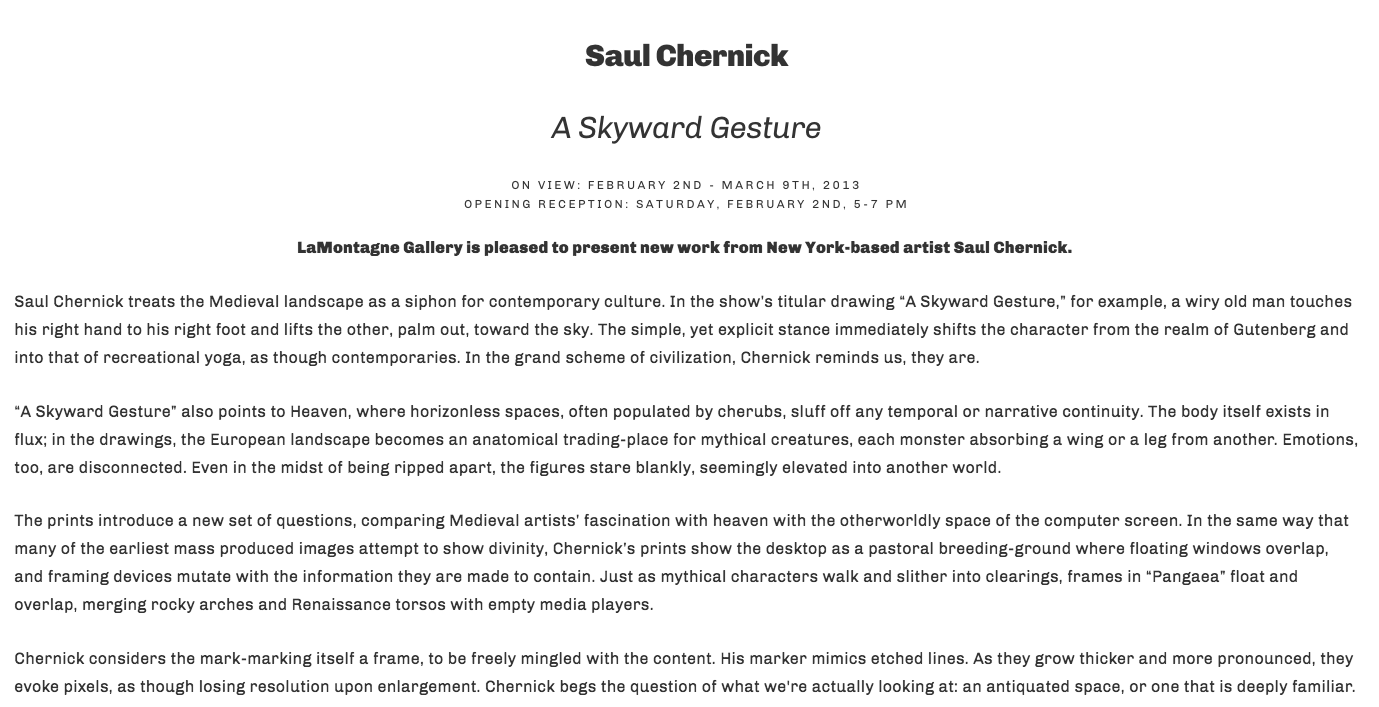Saul Chernick
A Skyward Gesture
On View: February 2nd - March 9th, 2013
Opening Reception: Saturday, February 2nd, 5-7 PM
LaMontagne Gallery is pleased to present new work from New York-based artist Saul Chernick.
Saul Chernick treats the Medieval landscape as a siphon for contemporary culture. In the show’s titular drawing “A Skyward Gesture,” for example, a wiry old man touches his right hand to his right foot and lifts the other, palm out, toward the sky. The simple, yet explicit stance immediately shifts the character from the realm of Gutenberg and into that of recreational yoga, as though contemporaries. In the grand scheme of civilization, Chernick reminds us, they are.
“A Skyward Gesture” also points to Heaven, where horizonless spaces, often populated by cherubs, sluff off any temporal or narrative continuity. The body itself exists in flux; in the drawings, the European landscape becomes an anatomical trading-place for mythical creatures, each monster absorbing a wing or a leg from another. Emotions, too, are disconnected. Even in the midst of being ripped apart, the figures stare blankly, seemingly elevated into another world.
The prints introduce a new set of questions, comparing Medieval artists’ fascination with heaven with the otherworldly space of the computer screen. In the same way that many of the earliest mass produced images attempt to show divinity, Chernick’s prints show the desktop as a pastoral breeding-ground where floating windows overlap, and framing devices mutate with the information they are made to contain. Just as mythical characters walk and slither into clearings, frames in “Pangaea” float and overlap, merging rocky arches and Renaissance torsos with empty media players.
Chernick considers the mark-marking itself a frame, to be freely mingled with the content. His marker mimics etched lines. As they grow thicker and more pronounced, they evoke pixels, as though losing resolution upon enlargement. Chernick begs the question of what we're actually looking at: an antiquated space, or one that is deeply familiar.

